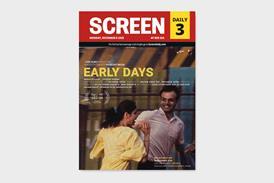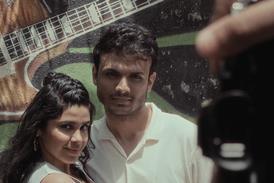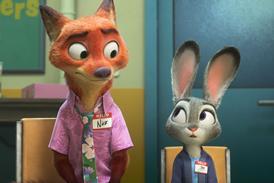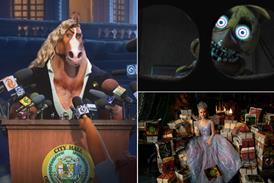Abstracted from the weekly edition of Screen International
Everyone's a critic these days - including Harvey Weinstein. The Miramax co-chairman felt the urge recently to write into the Los Angeles Times in praise of Steven Spielberg's A.I. a film he feels fully deserves all the plaudits thrown its way by America's largely adoring critics. Despite A.I.'s less-than-stellar run at the domestic box office, Weinstein absolutely refuses to believe that US critics are terminally out of touch with regular movie-goers. US audiences, he wrote, will eventually catch up with the critics on this film.
Weinstein's contrarian remarks are timely indeed. Exactly fifty years has passed since Andre Bazin and Jacques Doniol-Valcroze founded Cahiers Du Cinema, the most influential magazine devoted to the study of film as an art form. It's an anniversary that Screen International is marking with this inaugural "Wide Angle" commentary plus a series of companion articles within this week's edition. Its birthday also reminds us that, rather than being increasingly irrelevant, critics are more necessary than ever in terms of bolstering those films and filmmakers that toil on the margins of mainstream Hollywood cinema.
For two decades, Cahiers became the dominant critical voice in European and American cinema, due to a number of reasons. Bazin, who co-edited the magazine until his death, in 1958, surrounded himself with a cohort of talented writers-devotees, including Truffaut, Rohmer, Godard, and Rivette. Eventually, most of them went on to become distinguished directors, providing the core for what became known as La Nouvelle Vague. From its beginning, Cahiers' guiding editorial principle was auteurism, based on Truffaut's 1954 seminal essay, "La politique des auteurs." The French New wave was a direct outgrowth of the auteurist theories promulgated by the journal.
Equally important was Cahiers' re-evaluation of mainstream Hollywood cinema, elevating the prestige of such "commercial" filmmakers as Alfred Hitchcock, John Ford, Howard Hawks, and Nicholas Ray, who weren't taken seriously by American critics. Cahiers established a critical tradition that didn't distinguish between serious art films and commercial entertainment, an approach later embraced by the two most powerful critics in American history: Andrew Sarris and Pauline Kael.
The philosophy, which translates into according the same serious analysis to Jonathan Demme's horror flick, The Silence Of The Lambs, as to his more prestigious but pretentiously earnest drama, Beloved, continues to define most critics' work. What's new about American movie criticism is that it's more democratic and pluralistic than ever before. No single film critic today, not even Roger Ebert, dominates the scene and commands the respect and attention that Sarris or Kael had at their prime in the 1960s and 1970s. Yet, at the same time, the overall quality of criticism has never been better, due to the fact that most writers are graduates of film schools.
A number of trends mark American movie criticism currently:
Critics possess greater power when they are united in a consensus. An individual critic can single out in the widely read Entertainment Weekly, a film such as The Truman Show, or Election, or Chuck & Buck, as the year's best movie; but if other strategic critics don't rally behind, as was the case with those particular titles, a single voice has no bearing. This is the reason why critics' awards at year-end are forceful in determining the very chances of movies to be nominated for Oscars.
With the exception of a few movies, such as Batman or this year's Planet Of The Apes, arguably no movie is entirely critic-proof. There's no doubt that A.I. would have been more successful at the box-office had it been embraced by all critics, as Steven Spielberg's previous picture, Saving Private Ryan, was. The same applies to Pearl Harbor and Tomb Raider, which would have grossed domestically more than $190m and $125m, respectively, had they received positive reviews. Mixed-to-negative reviews for Charlie's Angels damaged its commercial prospects in the same way that mixed-to-positive reviews for the glorious B-picture The Fast And The Furious improved its box office standing.
The gap between reviewing and criticism has become wider. By necessity, most critics nowadays function as reviewers or taste-guides writing brief consumer reports that urge the public to spend $9 or $10 to see a movie - or not. Only a handful of writers are engaged in a formal criticism that illuminates the qualities of a particular film by placing it in the social context in which it was made, or in the context of its director's oeuvre. Capsule reviews for foreign-language films have become a norm, not to speak of their placement in the newspaper's back pages, unless they are high profile pictures like Crouching Tiger, Hidden Dragon.
Critics are particularly influential on three types of films: independent and art films, foreign-language fare, and documentaries. The very existence of these genres -- all endangered species in today's market -- depends on critics' judgments in film festivals, where such fare often receives its world premiere. American independent cinema has flourished over the past decade as a direct result of being championed by major critics.
The rising importance of the trade papers and their daily web sites is a factor. Next to the Cannes Film Festival, Sundance is arguably the most influential film forum in the world in terms of discovering "hot" talent and new movies. Since only the three English-language 'trades' (Variety, Hollywood Reporter and Screen International) devote full-length, analytic reviews out of festivals, their critics exercise tremendous impact on determining the chances that a film can get theatrical distribution, or even play the global art-house circuit. A number of art films, such as Jean Luc Godard's In Praise Of Love and Jacques Rivette's Va Savoir!, were picked up by distributors after getting positive notices in the trades at Cannes this year.
The venue or magazine for which critics write is often more important than their personality or sensibility. Hence, critics who write for the New York Times and Los Angeles Times assume extra power, due to the stature of their newspaper, often way beyond their idiosyncratic tastes. Realizing this fact, the studios' publicity machines would take ads that proclaim, "according to the N.Y. Times," or "see the L.A. Times' best movie of the year," without even mentioning the critic's name.
The rising clout of the international weekly news magazines, such as Time and Newsweek has been noticeable of late, especially through reviews that masquerade as early feature articles. The early, glowing review by Time's Richard Schickel of Stanley Kubrick's Eyes Wide Shut ("haunting masterpiece"), and recently by both Time and Newsweek of A.I., may have become more instrumental than either the L.A. or N.Y. Times in setting the agenda for writing about and discussing those movies. By the time the dailies review those movies, usually on opening day, the films' "fate" has been determined, due to the weeklies' international visibility and the heavy baggage the movies themselves carry.
Critics own word-of-mouth</


















No comments yet